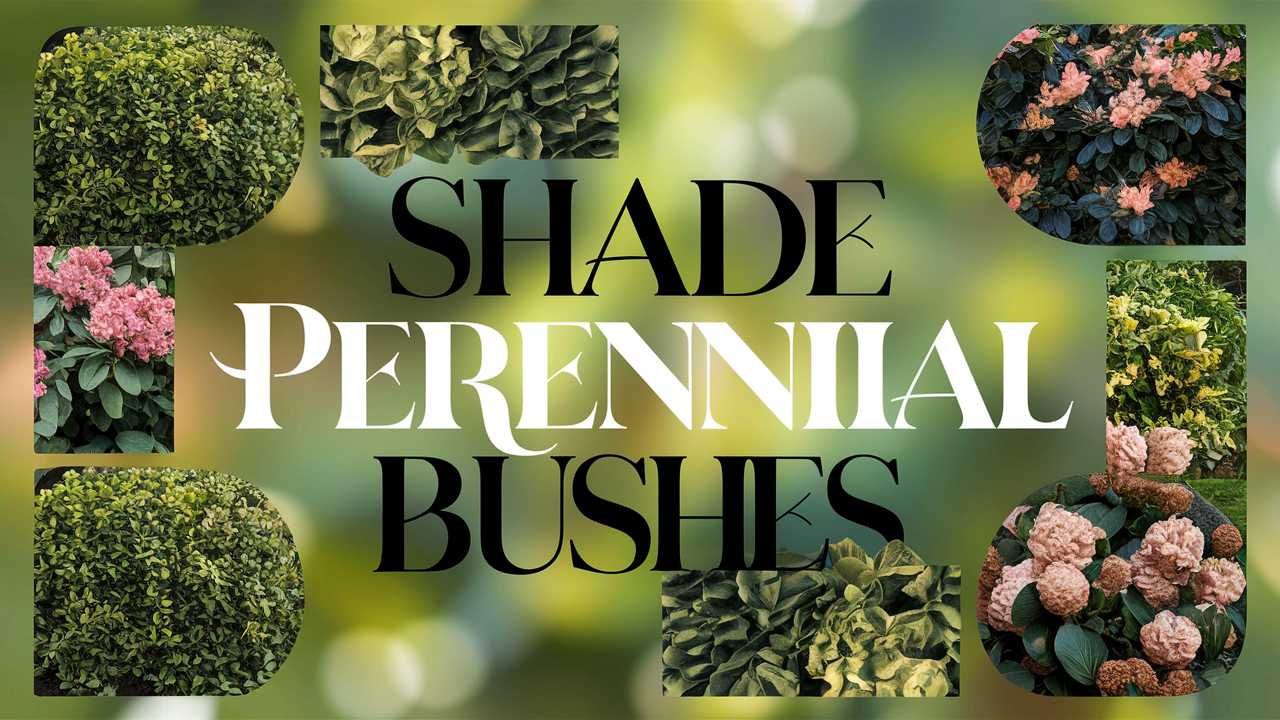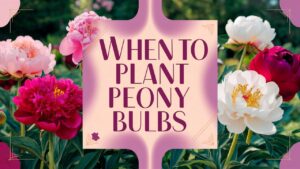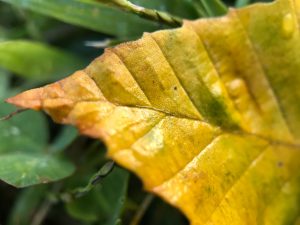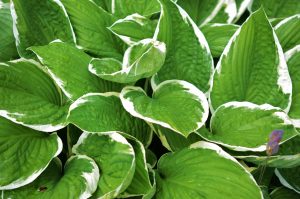In this article, we’ll explore a variety of shade-loving perennial bushes that can flourish in your garden, each bringing its own unique attributes and charm.
Abelia
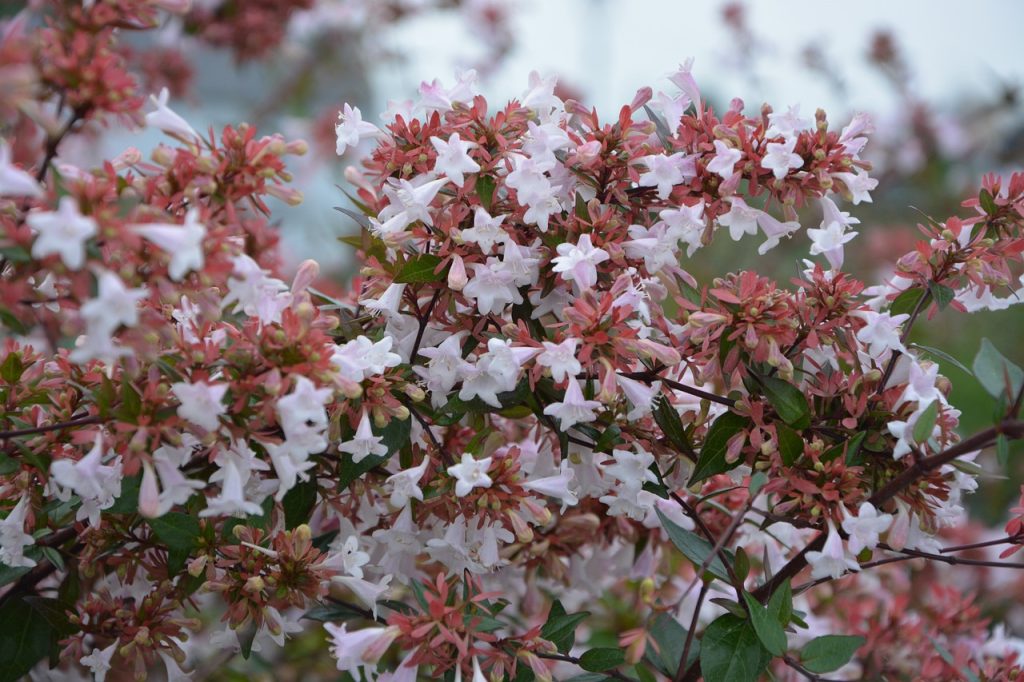
Abelia is a semi-evergreen shrub known for its delicate, arching branches and glossy leaves. It produces delightful clusters of tubular flowers in shades ranging from soft pink to white during the summer months. This low-maintenance shrub thrives in partial shade, making it an excellent choice for gardens that don’t receive a lot of direct sunlight.
Beyond its aesthetic appeal, Abelia offers practical benefits as well. It attracts pollinators like bees and butterflies, making it a wonderful addition to a wildlife-friendly garden. Its ability to tolerate drought once established means less frequent watering, giving you more time to enjoy your garden rather than tend to it.
Aucuba
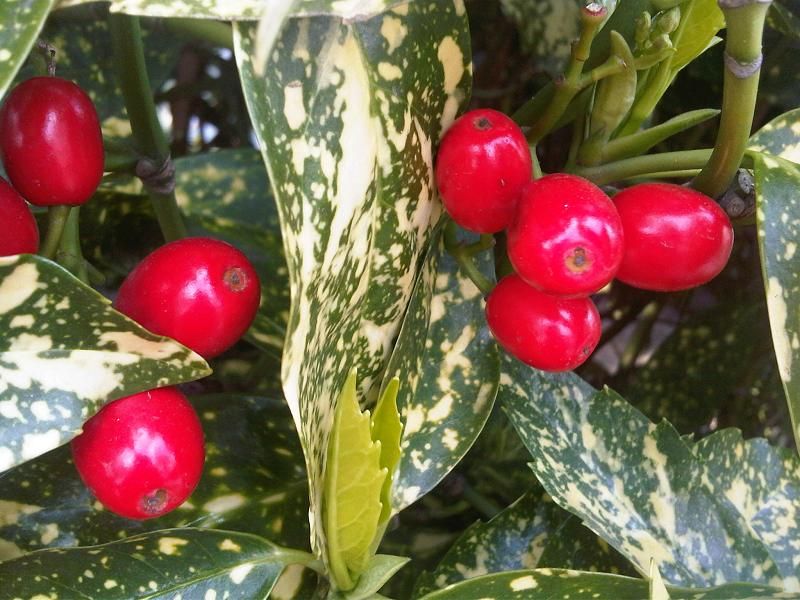
Aucuba, also known as the spotted laurel, is a fantastic choice for those looking to add a dramatic flair to their shaded spaces. This evergreen shrub is notable for its striking, variegated leaves, which feature bright green foliage splattered with gold. Aucuba not only thrives in full shade but is also tolerant of urban pollution, making it ideal for city gardens.
One of the unique aspects of Aucuba is its ability to produce red berries in both male and female plants, given that both sexes are available. These berries can sustain birds during the colder months, further contributing to your garden’s ecosystem. Moreover, the bush’s low growth habit allows it to be an excellent filler plant, enhancing the overall aesthetic of your shaded areas.
Azalea
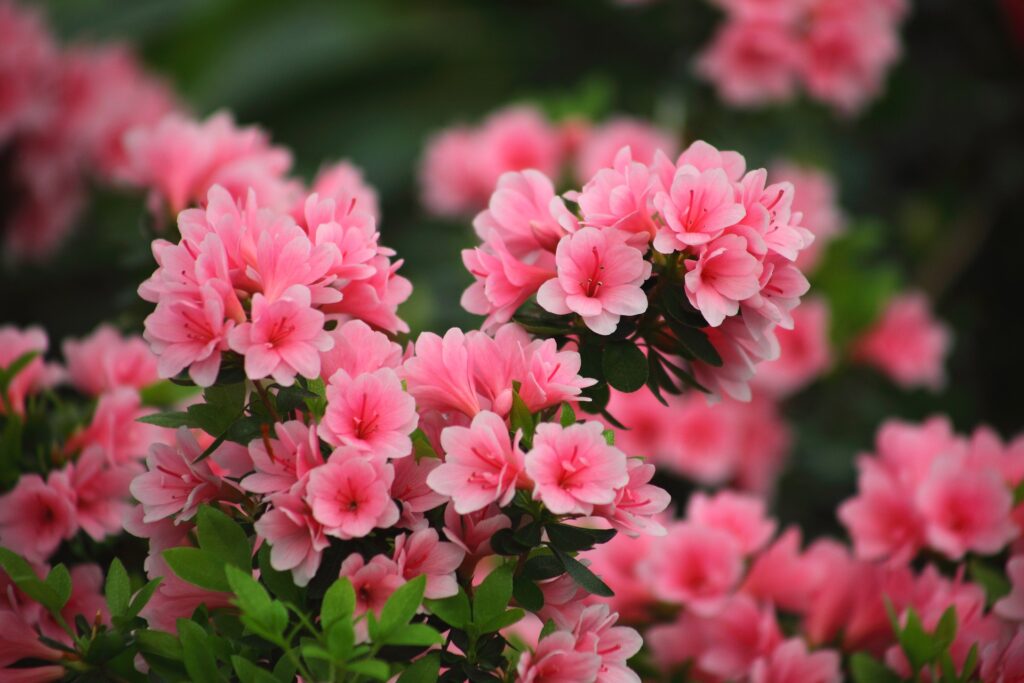
Azaleas are beloved for their stunning blooms that light up gardens in vibrant colors, including pinks, reds, and whites. While they can thrive in full sun, many varieties prefer the gentler light found under the cover of taller trees. This versatility makes them suitable for various garden designs, whether in borders or as standalone specimens.
When planting Azaleas, soil quality is crucial. They prefer acidic, well-drained soil, and adding mulch can help retain moisture and maintain soil acidity. The cherry on top is their fragrant flowers, which not only uplift the spirits of garden visitors but also attract pollinators, enriching the garden experience. Planting Azaleas in groups can create a dramatic yet harmonious gradient of color in your shady retreats.
Bigleaf Hydrangea
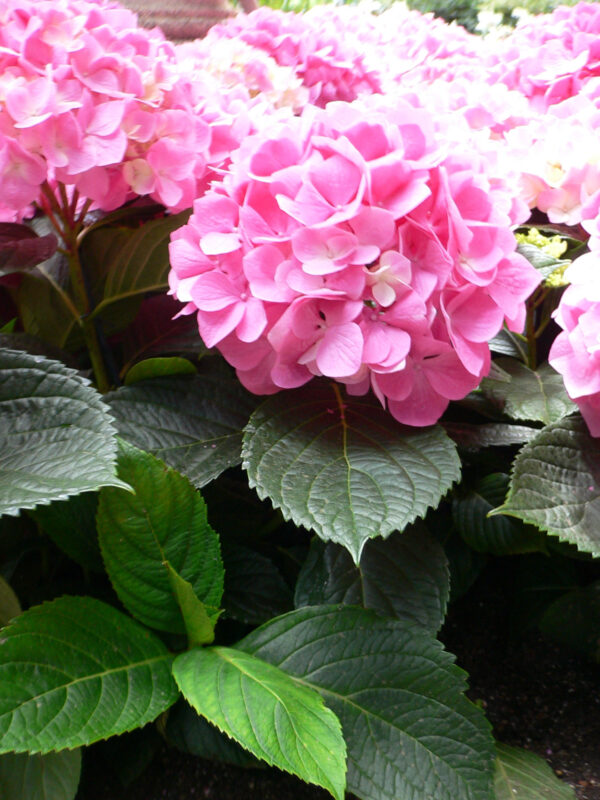
Bigleaf Hydrangea, or Hydrangea macrophylla, offers a truly enchanting display in shaded gardens. Known for its large, pom-pom-shaped blooms that can range from blue to pink, this bush brings a romantic touch that many gardeners adore. Their flower color can be influenced by soil pH, allowing for some experimentation in your landscaping.
This shrub flourishes in partial to full shade and enjoys consistently moist soil—perfect for moisture-retaining areas under trees. Its broad foliage also provides an interesting texture that contrasts elegantly with other plants around it. Plus, the blooms can last a long time, and even the dried flowers make for lovely winter arrangements, providing year-round interest.
Bottlebrush Buckeye
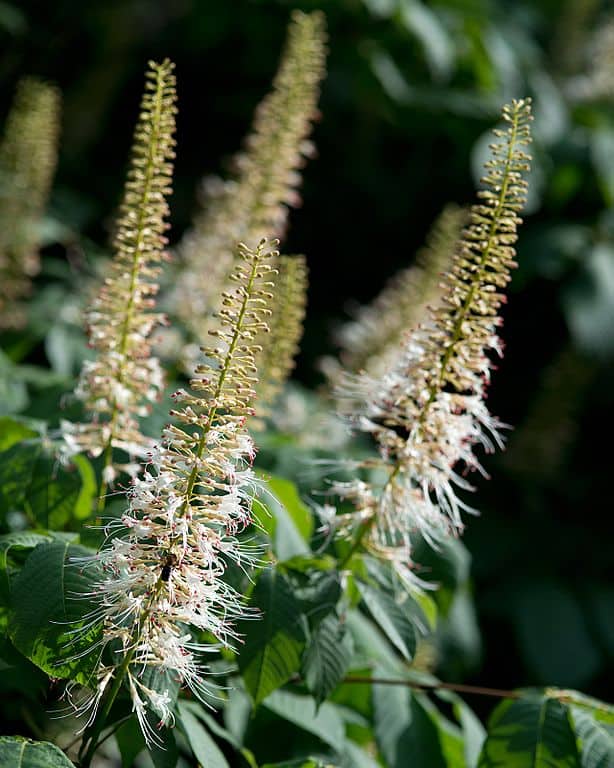
The Bottlebrush Buckeye, also known as Aesculus parviflora, brings a unique character to shaded areas with its large, candle-like flower spikes and palmate leaves. This deciduous shrub is particularly stunning during the summer when clusters of white flowers with a hint of yellow and pink attract various pollinators.
Growing best in partial shade, this shrub also provides an excellent backdrop with its dense growth habit. It can reach a significant height, making it perfect for creating layers in your garden design. Furthermore, its adaptability to a variety of soil types means it can thrive in different conditions, making it a versatile and resilient choice.
Camellia
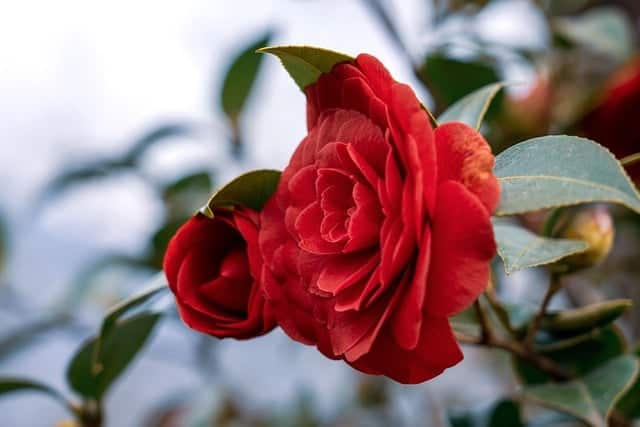
If you’re yearning for winter blooms, consider the Camellia. Known for its beautiful, waxy flowers that bloom from fall to spring, Camellias can add a touch of elegance to any shaded garden. The glossy, dark green leaves provide a perfect backdrop for the vibrant blooms, which can range in color from soft pinks to rich reds.
These evergreen shrubs prefer dappled sunlight and are particularly delicate, requiring well-drained, acidic soil. The effort you put into caring for them is well rewarded when their spectacular blooms arrive. Be sure to choose a sheltered spot to protect them from harsh winter winds, allowing these beauties to thrive season after season.
Eastern Wahoo
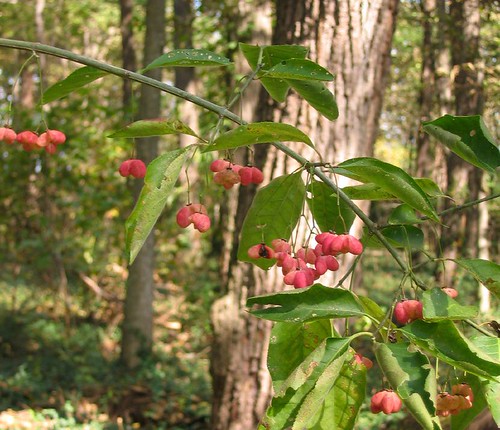
The Eastern Wahoo, or Euonymus atropurpureus, can serve as an excellent natural privacy screen in shaded gardens. Known for its unique purple berries that ripen in the fall, this deciduous shrub boasts an attractive, layered branching structure.
This shrub shows its true versatility as it thrives in various soil types and conditions, making it a low-maintenance addition to your landscape. Its foliage puts on a stunning show in the fall when it transforms into a cascade of reds and oranges, thus providing year-round interest. Plus, it’s a great choice for attracting birds to your garden, enhancing its wildlife allure.
Kerria

Kerria, also known as Kerri japonica, is a deciduous shrub that shines with its bright yellow flowers, offering a burst of color in the early spring. This shrub thrives in partial to full shade and tolerates a range of soil conditions, making it a reliable choice for any shaded garden.
What sets Kerria apart is its long blooming season and distinctive arching stems. This low-maintenance shrub can create a stunning visual display when planted in groups or draped over retaining walls. The cheerful yellow blooms are perfect for bringing in the spring sunshine, even in shadier corners of your landscape.
Leucothoe
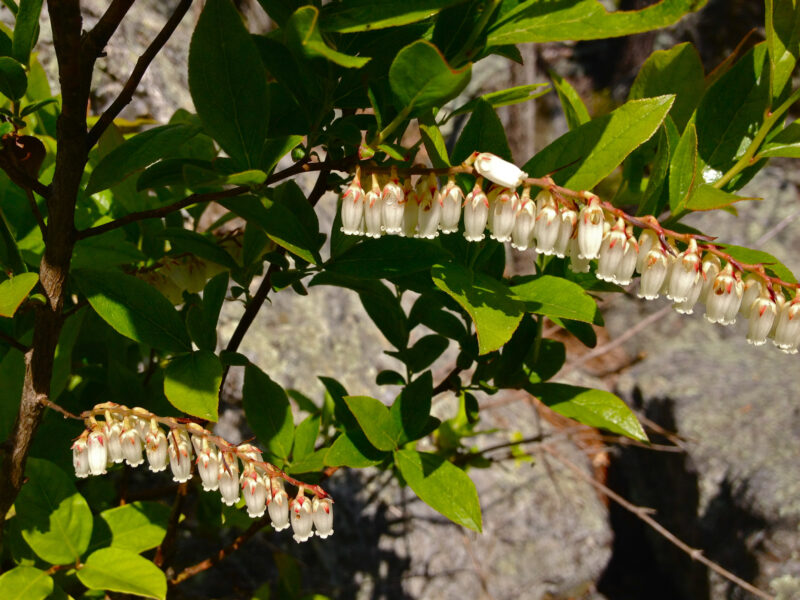
Leucothoe, a lesser-known gem, is a superb choice for shaded areas. Known for its graceful, drooping branches and lustrous, evergreen leaves, this low-growing shrub can add texture and depth to your garden. During spring, it produces small, bell-shaped flowers that are a delight for pollinators.
This adaptable shrub thrives in partial to full shade and prefers moist, well-drained soil. Its aesthetic appeal is enhanced by its colorful foliage in autumn, which can turn shades of purple and red. Leucothoe is an excellent option for those looking to design layered planting schemes or to soften the edges of pathways and borders.
Lily-of-the-Valley Shrub
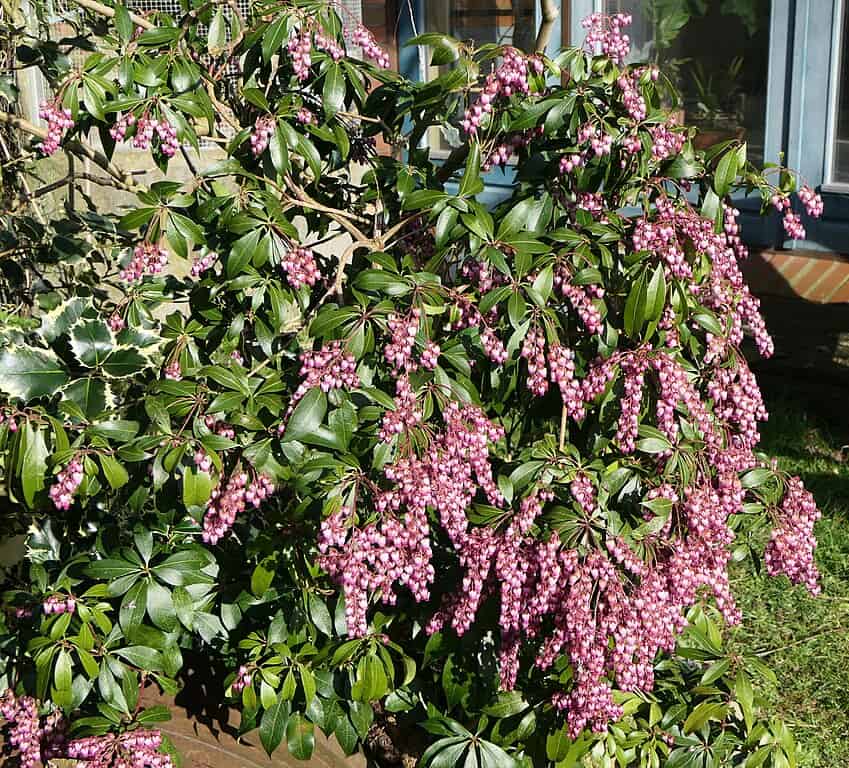
The Lily-of-the-Valley shrub (Pieris japonica) offers an air of refinement to shaded gardens. Featuring cascading clusters of delicate white or pink flowers, this evergreen shrub blooms in early spring, creating a captivating display that captivates both eyes and noses.
Preferring acidic, well-drained soil, the Lily-of-the-Valley shrub is an excellent companion for azaleas and rhododendrons. Its glossy, dark green leaves provide structure year-round and its low to moderate growth habit makes it versatile in garden layouts. This shrub’s beauty and fragrance make it a welcome addition to any shady nook.
Loropetalum
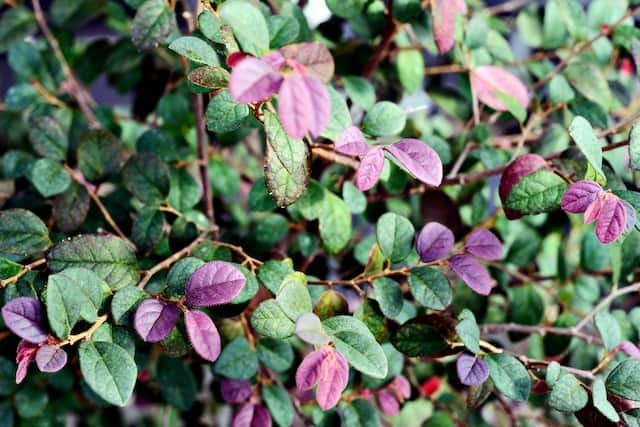
Loropetalum is a dynamic shrub that offers not only rich, colorful foliage but also mesmerizing flowers. With its spidery blooms in shades of pink and white, Loropetalum can provide vibrant contrast against dark green leaves. Its adaptability makes it suitable for both partial and full shade.
What makes Loropetalum especially appealing is its ability to maintain a compact form, ideal for small gardens or as part of a mixed shrub border. Its unique foliage can also change color with the seasons, providing year-round interest. Plus, it’s relatively low maintenance, requiring minimal pruning to maintain its handsome form.
Mountain Laurel
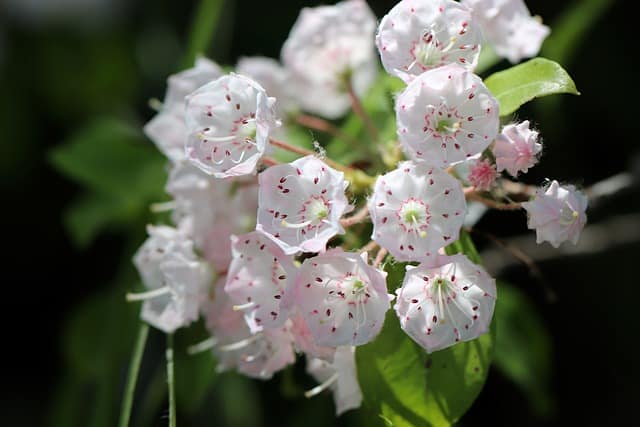
Mountain Laurel (Kalmia latifolia) is not just a pretty face; it’s a charismatic shrub that thrives in partial shade, adding elegance to woodland gardens. Its unique clusters of star-shaped flowers in shades of white, pink, and lavender create a stunning visual display, particularly in late spring when other plants begin to bloom.
This evergreen shrub prefers acidic, well-drained soil, making it a compatible companion for many shade-loving plants. Mountain Laurel can also tolerate varying moisture levels, but it’s essential to avoid overly wet conditions. As a resilient plant, it can establish itself even in difficult terrain, ensuring your garden remains lush and inviting.
Oakleaf Hydrangea
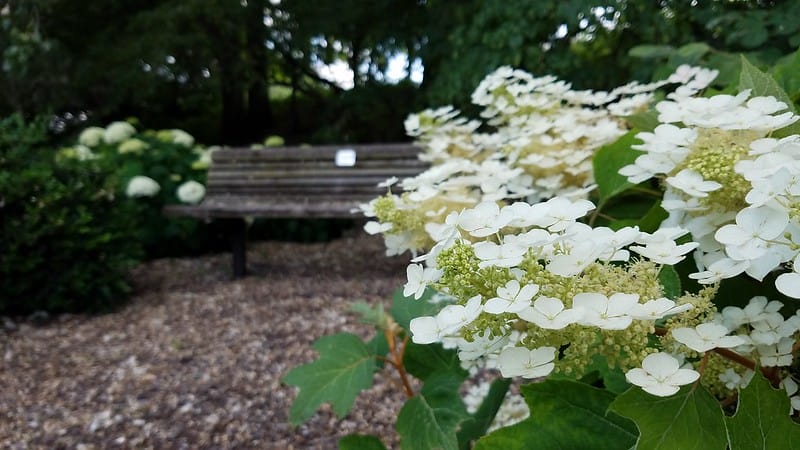
Oakleaf Hydrangea is a striking addition to any shaded garden, known for its lobed leaves that resemble those of an oak tree. This deciduous shrub boasts large, cone-shaped flower clusters that begin as white blooms and transition to shades of pink as summer progresses.
One of the standout features of the Oakleaf Hydrangea is its stunning fall foliage, making it a centerpiece throughout the year. It prefers well-drained soil and partial shade, thriving in environments where competing plants may struggle. Its architectural quality adds depth to garden designs, providing a dramatic focal point for any shady retreat.
Oregon Grape Holly
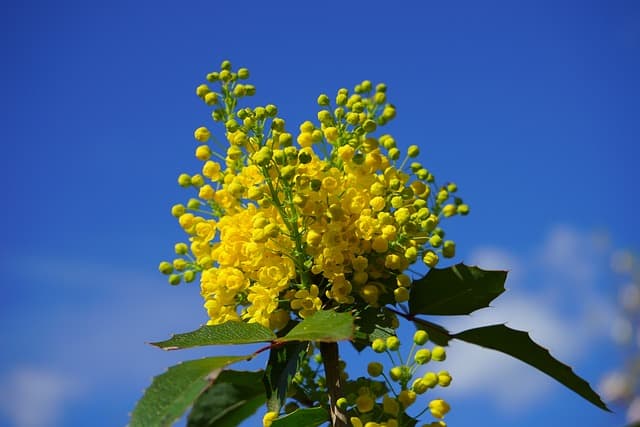
Oregon Grape Holly (Mahonia aquifolium) is a versatile and hardy shrub that thrives in shady conditions. Its spiky, holly-like leaves and clusters of yellow flowers make it a unique choice for creating texture in your garden.
Adding another layer of interest, the Oregon Grape Holly produces blue-purple berries in the fall, which are not only aesthetic but can also attract birds. This shrub is adaptable to various soil types, though it prefers moist, well-drained conditions. Its ability to thrive in difficult environments makes it particularly reliable for gardeners looking to enhance their shade areas with low-maintenance plants.
Rhododendron
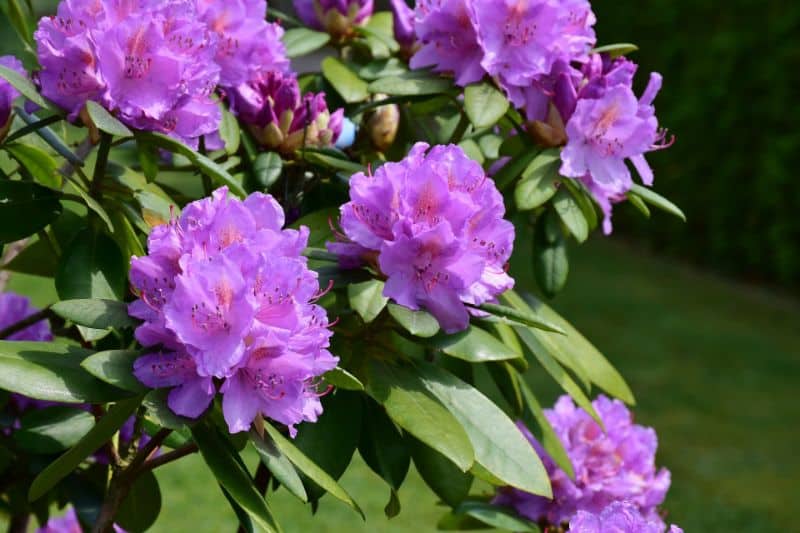
Rhododendrons are perhaps one of the most iconic shrubs for shaded areas, known for their large, showy blooms that burst forth in a stunning array of colors. These plants thrive in acidic, moist soil and can often survive in full shade, adapting beautifully to various garden landscapes.
The expansive variety of Rhododendrons allows for a range of heights and flower forms, ensuring there’s a perfect match for every garden. Their thick foliage provides excellent coverage and privacy, making them a popular choice for privacy hedges. Additionally, their blooms attract pollinators, enriching your garden ecology and adding life to even the shadiest nooks.
Serviceberry
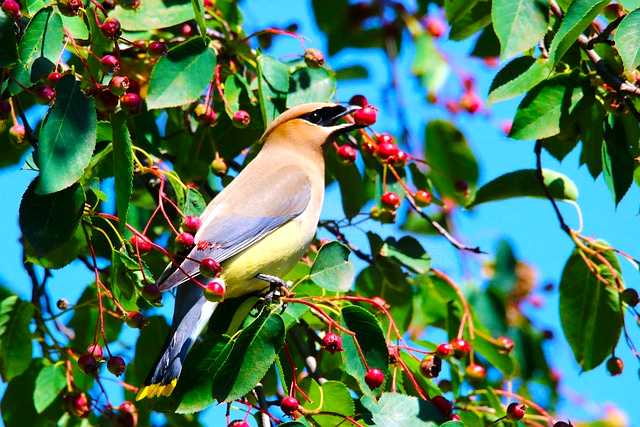
Serviceberry, or Amelanchier, is an exquisite choice for those looking to blend beauty with function in their gardens. Known for its lovely white flowers in spring and sweet, edible berries that follow, Serviceberry adds a delightful touch to shaded spaces.
This adaptable shrub grows well in a variety of soils and can thrive in partial shade. Additionally, its stunning fall color transforms to shades of orange, red, and yellow, ensuring visual interest throughout the seasons. Planting Serviceberries not only enhances your garden’s aesthetic appeal but also creates a habitat for birds and other wildlife, bolstering your garden’s biodiversity.
Staghorn Sumac

Staghorn Sumac is a striking shrub with a unique appearance, distinguished by its velvety red seed heads and feathery leaves. This deciduous shrub typically flourishes in sunny or partially shaded areas but can adapt well to various conditions, making it a practical choice for diverse landscapes.
In late summer, Staghorn Sumac produces clusters of eye-catching red berries that attract birds and other wildlife, underscoring its ecological value. The shrub’s dramatic visual aesthetics are complemented by its adaptability, making it an interesting choice for creating contrast in garden designs, particularly when planted alongside softer foliage.
Summersweet
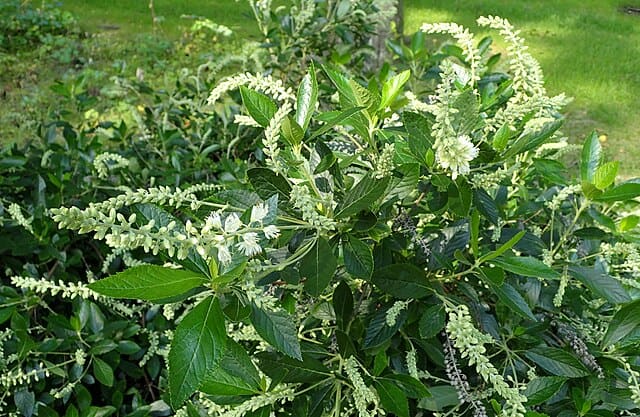
Summersweet (Clethra alnifolia) is a lovely shrub that thrives in shades, offering fragrant white or pink flower spikes in the summer. Its honey-scented blossoms attract butterflies and other pollinators, making it an excellent choice for garden wildlife.
This deciduous shrub prefers consistently moist soils and can tolerate a variety of conditions. Planting Summersweet near patios or walkways can amplify its fragrant offerings, creating a sensory experience within your garden. Its lush foliage provides a backdrop for seasonal transitions, as the leaves turn to vibrant yellows and oranges in the fall.
Viburnum
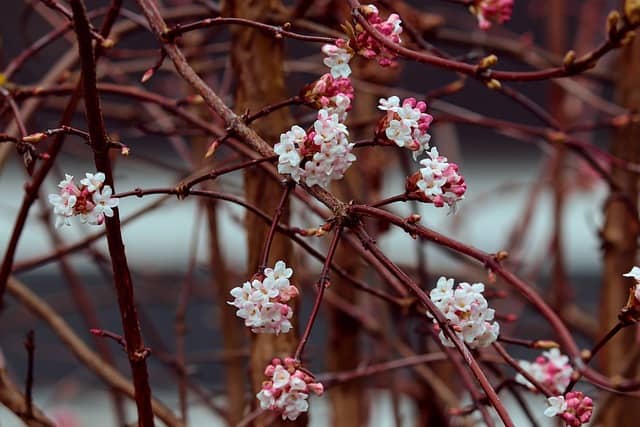
Viburnum is a versatile family of shrubs that can offer various forms, colors, and blooms, making it one of the best choices for shady gardens. With flowers ranging from creamy white to blush pink, Viburnum species are known for their ornamental appeal and fragrant blossoms that draw pollinators.
In addition to their floral beauty, many Viburnum varieties produce fruits that are enjoyed by local wildlife, enhancing the environmental value of your garden. They prefer moist, well-drained soil but can thrive in different light conditions, including shade. By varying your Viburnum selections, you can create an engaging tapestry of colors and textures throughout the planting seasons.
Virginia Sweetspire
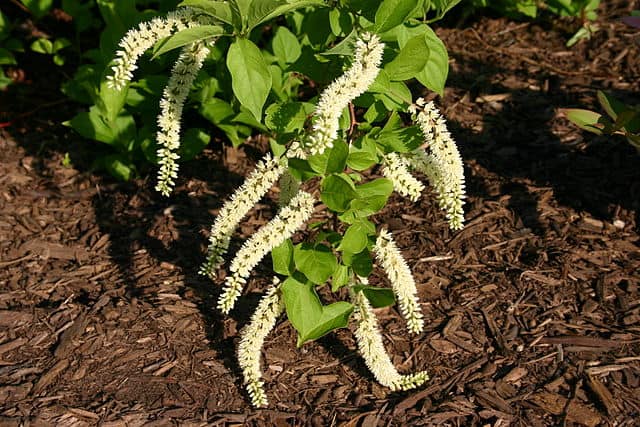
Virginia Sweetspire (Itea virginica) is often overlooked but is a gem for shaded gardens. Featuring fragrant white flowers that bloom in early summer, this shrub attracts bees and butterflies, adding life and movement to your garden.
It thrives in moist, acidic soils, making it ideal for planting near water features or in rain gardens. Its foliage exhibits vibrant colors in the fall, transitioning from deep green to beautiful oranges and reds, providing visual interest well into autumn. Planting Virginia Sweetspire as a mass or in borders can create a sweeping visual landscape in your shaded areas.
Winter Daphne
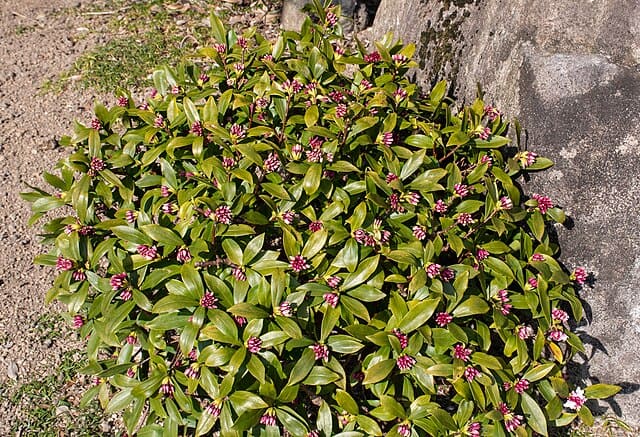
Winter Daphne (Daphne odora) is a fragrant evergreen shrub that blooms in late winter or early spring, bringing joy during the dreary months. Its delicate, fragrant clusters of pale pink flowers are not only beautiful but also fill the air with a sweet aroma, enticing garden visitors.
This shrub prefers partial shade and well-drained soils, making it well-suited for under trees or along shaded paths. With glossy leaves that provide year-round interest, Winter Daphne makes for an exceptional addition, signifying the arrival of spring with its charming blooms.
Yew
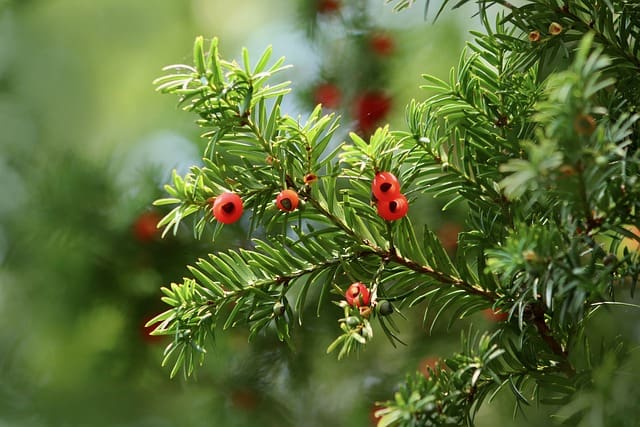
Yew (Taxus) is a classic evergreen shrub known for its versatility and longevity. This adaptable shrub tolerates a wide range of soil types and can thrive in full shade, making it an excellent choice for foundational plantings in shady gardens.
With its dark green needles and soft texture, Yew provides a structural element that can frame garden beds or serve as a backdrop for more vibrant flowering shrubs. Additionally, its ability to handle pruning allows for creative shaping, providing gardeners with opportunities to tailor its form to fit their design vision.


